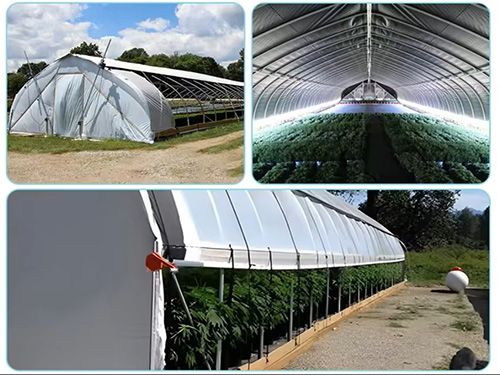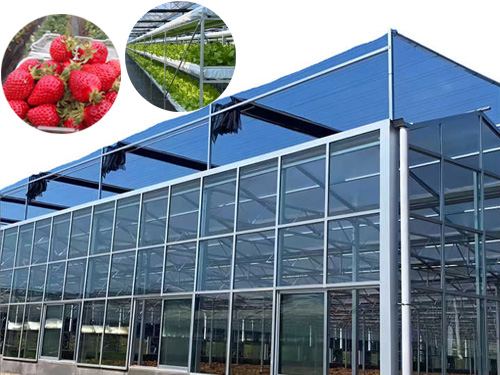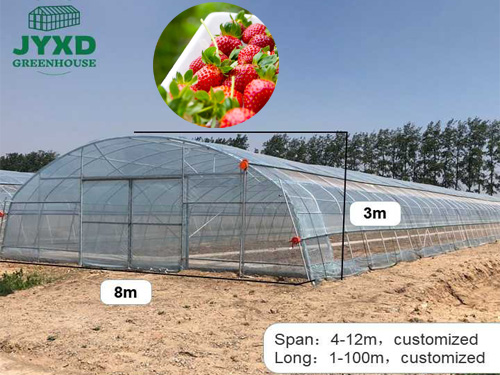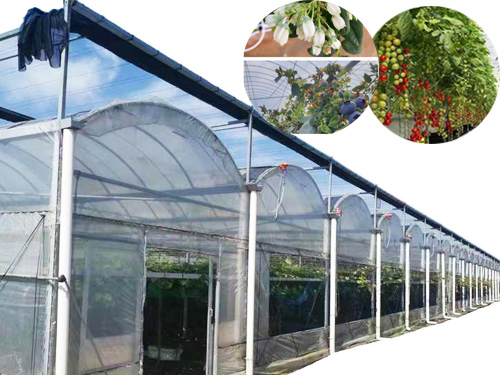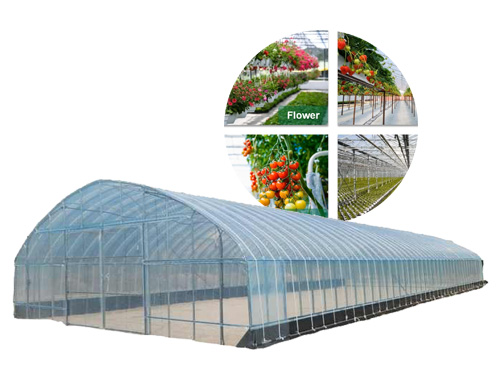NEWS DETAILS
NEWS INFORMATION
LED Grow Lights for Greenhouses: Spectrum Customization & Energy Consumption Analysis
AUTHOR:jyxd-greenhouse DATE:2025-04-14 23:24:34 HITS:183
LED grow lights have revolutionized greenhouse cultivation by providing precise, energy-efficient lighting tailored to plant needs. With the ability to customize light spectra and optimize energy consumption, LED grow lights are an essential tool for modern greenhouse operations. This article explores the benefits of LED grow lights, the importance of spectrum customization, and an analysis of energy consumption to help growers maximize productivity and sustainability.
Why LED Grow Lights Matter in Greenhouses
Greenhouses rely on supplemental lighting to ensure consistent plant growth, especially in regions with limited sunlight or during winter months. LED grow lights offer several advantages over traditional lighting systems:
· Energy Efficiency: Consume less energy while providing high light output.
· Customizable Spectra: Tailor light wavelengths to specific plant needs.
· Long Lifespan: Last significantly longer than traditional bulbs, reducing replacement costs.
· Heat Management: Produce less heat, minimizing the risk of plant stress.
1. Spectrum Customization for Optimal Plant Growth
Plants use different wavelengths of light for various growth stages. LED grow lights allow growers to customize the light spectrum to maximize photosynthesis and plant health.
Key Light Spectra and Their Effects:
· Blue Light (400-500 nm): Promotes vegetative growth, leaf development, and chlorophyll production.
· Red Light (600-700 nm): Enhances flowering, fruiting, and overall biomass.
· Far-Red Light (700-800 nm): Influences plant morphology and flowering time.
· Full Spectrum: Mimics natural sunlight, supporting all growth stages.
Benefits of Spectrum Customization:
· Targeted Growth: Optimize light for specific crops or growth stages (e.g., leafy greens vs. flowering plants).
· Increased Yields: Enhance photosynthesis and nutrient uptake for higher productivity.
· Energy Savings: Use only the necessary wavelengths, reducing energy waste.
Case Study: Lettuce Greenhouse in the Netherlands
· Challenge: Limited sunlight during winter months.
· Solution: Installed LED grow lights with a blue-dominant spectrum for vegetative growth.
· Result: Increased lettuce yields by 30% while reducing energy consumption by 20%.
2. Energy Consumption Analysis of LED Grow Lights
LED grow lights are known for their energy efficiency, but understanding their consumption patterns is crucial for cost-effective greenhouse management.
Energy Consumption Factors:
· Wattage: LED lights consume less wattage than traditional HID or fluorescent lights while providing equivalent or better light output.
· Efficiency: Measured in micromoles per joule (μmol/J), indicating how effectively light is converted into usable energy for plants.
· Usage Time: The duration and intensity of light exposure affect overall energy consumption.
Comparison with Traditional Lighting:
· HID Lights: Consume 400-1,000 watts per fixture, with lower efficiency and higher heat output.
· Fluorescent Lights: Consume 40-100 watts per fixture but have limited spectrum control.
· LED Lights: Consume 100-600 watts per fixture, with higher efficiency and customizable spectra.
Energy Savings Calculation:
· Example: Replacing 1,000-watt HID lights with 600-watt LED lights for 12 hours daily.
o HID: 1,000 watts × 12 hours = 12 kWh/day.
o LED: 600 watts × 12 hours = 7.2 kWh/day.
o Savings: 4.8 kWh/day (40% reduction).
3. Best Practices for Using LED Grow Lights in Greenhouses
To maximize the benefits of LED grow lights, follow these best practices:
Choose the Right Fixtures:
· Full Spectrum: For general use across all growth stages.
· Custom Spectra: For specific crops or growth phases.
· High Efficiency: Look for fixtures with high μmol/J ratings.
Optimize Light Placement:
· Height Adjustment: Position lights at the optimal height for uniform light distribution.
· Light Intensity: Adjust intensity based on plant needs and growth stages.
Monitor and Adjust:
· Use Sensors: Track light levels and adjust fixtures as needed.
· Automated Systems: Integrate with climate control systems for seamless adjustments.
Maintain Equipment:
· Regular Cleaning: Keep fixtures clean to ensure maximum light output.
· Replace as Needed: Monitor LED lifespan and replace fixtures when efficiency declines.
4. Benefits of LED Grow Lights for Greenhouses
Implementing LED grow lights offers numerous advantages:
· Energy Efficiency: Reduces electricity costs and environmental impact.
· Customizable Growth: Tailors light spectra to specific plant needs for optimal growth.
· Higher Yields: Enhances photosynthesis and nutrient uptake, leading to increased productivity.
· Sustainability: Lower energy consumption and longer lifespan reduce waste.
5. Case Studies: LED Grow Lights in Action
Tomato Greenhouse in Spain:
· Challenge: High energy costs and inconsistent sunlight.
· Solution: Installed LED grow lights with a red-dominant spectrum for flowering and fruiting.
· Result: Increased tomato yields by 25% and reduced energy costs by 30%.
Herb Greenhouse in the USA:
· Challenge: Limited space and high lighting costs.
· Solution: Used vertical farming with LED grow lights optimized for leafy herbs.
· Result: Achieved year-round production with 40% energy savings.
Cannabis Greenhouse in Canada:
· Challenge: Strict light requirements for cannabis cultivation.
· Solution: Deployed full-spectrum LED grow lights with adjustable intensity.
· Result: Improved cannabinoid content and reduced energy consumption by 50%.
Conclusion
LED grow lights are a game-changer for greenhouse cultivation, offering customizable spectra, energy efficiency, and enhanced plant growth. By understanding spectrum customization and analyzing energy consumption, growers can optimize their lighting systems for higher yields, lower costs, and sustainable practices. Whether you’re cultivating vegetables, herbs, or specialty crops, LED grow lights provide a versatile and efficient solution for year-round productivity.
For more expert tips and high-quality greenhouse solutions, visit our website and take your farming practices to the next level. Let’s grow smarter and cultivate a greener future together!
![]()
Meta Description: Discover how LED grow lights with spectrum customization and energy efficiency can optimize greenhouse cultivation. Learn strategies for higher yields and sustainable farming.
Hebei Juyou Xinda Greenhouse Facilities Co.,Ltd.
Copyright © 2024-2025 https://www.jyxd-greenhouse.com. All Rights Reserved Hebei Juyou Xinda Greenhouse Facilities Co.,Ltd.Copyright





 Current Location:
Current Location:


